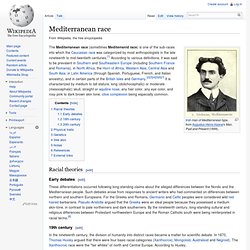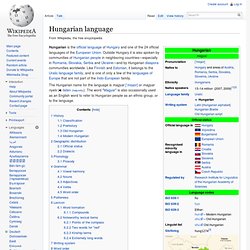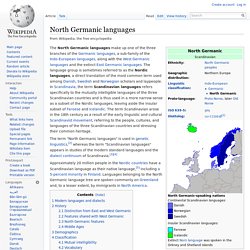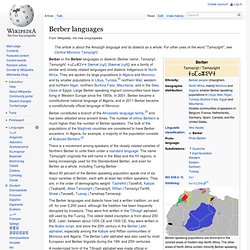

Mediterranean race. The Mediterranean race (sometimes Mediterranid race) is one of the sub-races into which the Caucasian race was categorized by most anthropologists in the late nineteenth to mid-twentieth centuries.[1] According to various definitions, it was said to be prevalent in Southern and Southeastern Europe (including Southern France and Romania), in North Africa, the Horn of Africa, Western Asia, Central Asia and South Asia, in Latin America (through Spanish, Portuguese, French, and Italian ancestry), and in certain parts of the British Isles and Germany.[2][3][4][5][6][7] It is characterized by medium to tall stature, long (dolichocephalic) or moderate (mesocephalic) skull, straight or aquiline nose, any hair color, any eye color, and rosy pink to dark brown skin tone; olive complexion being especially common.

Racial theories[edit] Early debates[edit] These differentiations occurred following long-standing claims about the alleged differences between the Nordic and the Mediterranean people. C. Hungarian language. Hungarian is the official language of Hungary and one of the 24 official languages of the European Union.

Outside Hungary it is also spoken by communities of Hungarian people in neighboring countries—especially in Romania, Slovakia, Serbia and Ukraine—and by Hungarian diaspora communities worldwide. Like Finnish and Estonian, it belongs to the Uralic language family, and is one of only a few of the languages of Europe that are not part of the Indo-European family. The Hungarian name for the language is magyar [ˈmɒɟɒr] or magyar nyelv ( listen ). The word "Magyar" is also occasionally used as an English word to refer to Hungarian people as an ethnic group, or to the language. History[edit] Classification[edit] Hungarian is a member of the Uralic language family. The name of Hungary could be a result of regular sound changes of Ungrian/Ugrian, and the fact that the Eastern Slavs referred to Hungarians as Ǫgry/Ǫgrove (sg.
Prehistory[edit] Old Hungarian[edit] Modern Hungarian[edit] Dialects[edit] North Germanic languages. The North Germanic languages make up one of the three branches of the Germanic languages, a sub-family of the Indo-European languages, along with the West Germanic languages and the extinct East Germanic languages.

The language group is sometimes referred to as the Nordic languages, a direct translation of the most common term used among Danish, Swedish and Norwegian scholars and laypeople. In Scandinavia, the term Scandinavian languages refers specifically to the mutually intelligible languages of the three Scandinavian countries and is thus used in a more narrow sense as a subset of the Nordic languages, leaving aside the insular subset of Faroese and Icelandic. The term Scandinavian arose in the 18th century as a result of the early linguistic and cultural Scandinavist movement, referring to the people, cultures, and languages of the three Scandinavian countries and stressing their common heritage.
Modern languages and dialects[edit] The modern languages in this group are: Berber languages. Berber or the Berber languages or dialects (Berber name: Tamaziɣt, Tamazight, ⵜⴰⵎⴰⵣⵉⵖⵜ [tæmæˈzɪɣt], [θæmæˈzɪɣθ]) are a family of similar and closely related languages and dialects indigenous to North Africa.

They are spoken by large populations in Algeria and Morocco, and by smaller populations in Libya, Tunisia,[2] northern Mali, western and northern Niger, northern Burkina Faso, Mauritania, and in the Siwa Oasis of Egypt. Large Berber-speaking migrant communities have been living in Western Europe since the 1950s. In 2001, Berber became a constitutional national language of Algeria, and in 2011 Berber became a constitutionally official language of Morocco. Berber constitutes a branch of the Afroasiatic language family,[3] and has been attested since ancient times. The number of ethnic Berbers is much higher than the number of Berber speakers. There is a movement among speakers of the closely related varieties of Northern Berber to unite them under a standard language. Origin[edit]